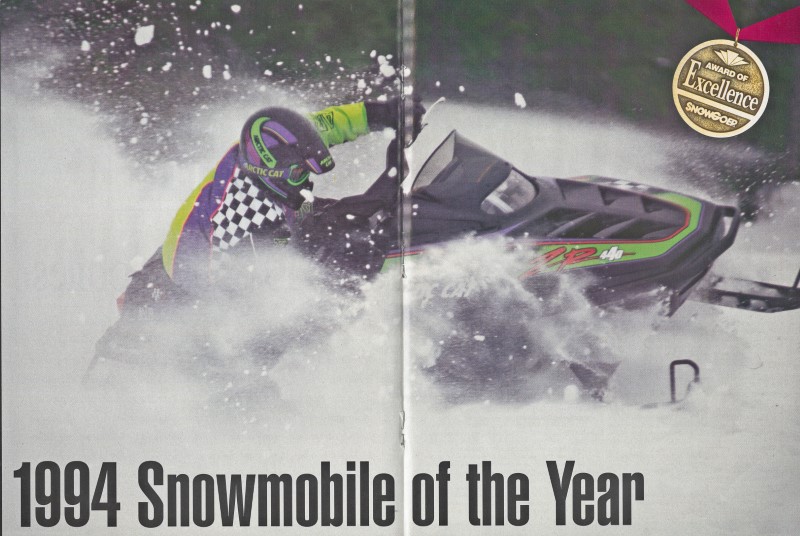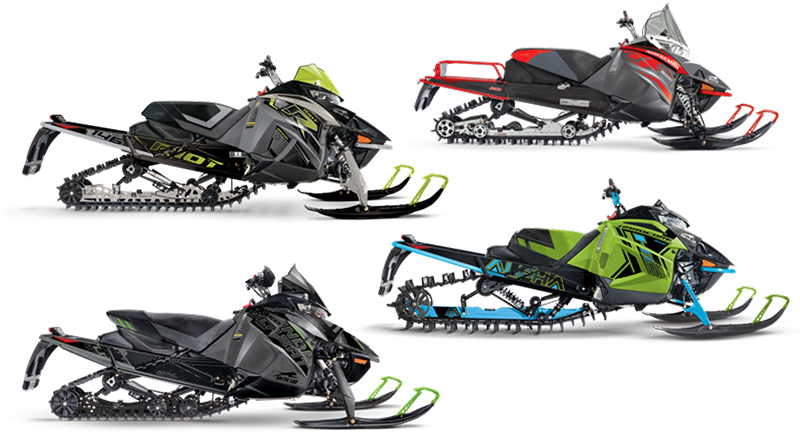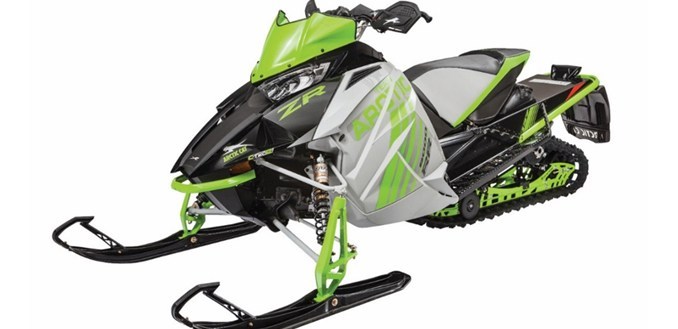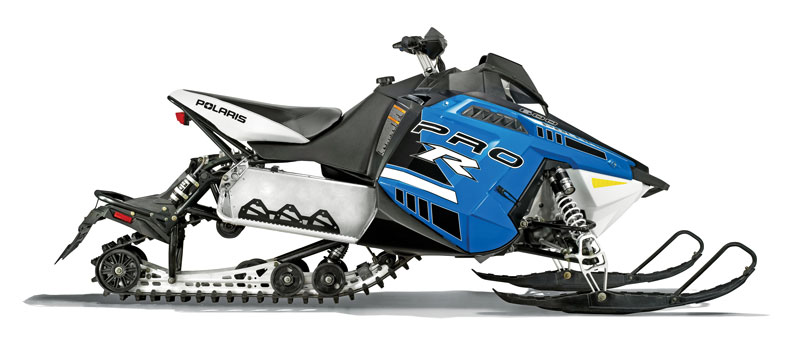… Continued from Page 2
SG: The 6000 El Tigré that we rode at Rode Reports, it was ran clean as hell. There were no burps or bobbles – it was just right there, all the time. That said, and I realize I’m sensitive ground here, at times it didn’t seem as fast reacting as some competitive designs. I met with one of your dealers last week, and he said he got to ridden one in late March that had a sixth generation of mapping on it, and he said it was just an animal. So, what has happened with the setup of that engine since we rode it in the last week of February? Bring us up to date.
HALLSTROM: You were really in the end of the third quarter of the football game. And then the other thing, doing the Rode Reports in West Yellowstone at 7,000 feet, I mean, everybody has got to understand that nobody’s stuff performs like it does here at 1,200 feet or wherever. So, you give a little bit up. We’re down 3 percent every 1,000 feet, right?
SPAULDING: We try to find ways to improve in spring testing. Just like we have forever. So there’s always going to be an improvement here or there.
HALLSTROM: We also changed the compound of the drive belt to coincide with the horsepower better. That’s just part of the development. That’s why it’s tricky to do Rode Reports at that time of the year. And you’re ever farther away if you try to do it with the Sneak Peek. I mean, between a late January ride and a February ride and a March ride, I know at our company, and I know the other guys too, there are a lot of changes. We can really only work from sometime in November until the end of April. That’s our window. But then within that window, there’s a very small window of really good, cold, consistent temperatures. Once we get into March, it can get hot and sticky.
SG: That’s really one of the unique challenges of our job is, so many of our readers, they want to read about what’s new. But what’s new is always the further off of its final calibration as compared to what’s already known. I’m sure Polaris, for instance, with the Cleanfire 600, they pretty much had their calibrations nailed at Rode Reports because they’ve had that engine for several seasons now. But our readers really want to read about the new motor — in this case, your new motor — because it’s new. So we’ve got to do the best we can, but certainly include some caveats.
EIDE: (laughing) Can you imagine if we told that to Roger [Skime] in February, that this thing is done [with its calibrations]? He’d find something in a heartbeat.
SPAULDING [laughing] Oh God yeah!
SG: So, the media will all describe the engine based on their experiences, but from your perspective, how would you describe the feel of this engine?
EIDE: Just in words, I’d put starts easier, light, responsive, good acceleration and consistent. And by consistent, I mean it does the same thing every time, probably considerably better than when you rode it.
SPAULDING: It’s funny how you can feel the weight of the motor.
EIDE: I’m sure you’ve driven snowmobiles, especially carbureted models, in that 4500 rpm trough where they’re out of tune what we call “popcorn” or “burbles,” you talked about how in Yellowstone you didn’t see that or feel that [in our 600], that was the true test. When it came from F6 engine to the Sno Pro 600 race engine. Of course, the 600 race sled has a lot of that popcorn at about 4500 rpm, it’s not really very drivable at that RPM, it’s a hyper race engine and doesn’t get driven there. So the big test was how would this fuel system work on it? And it tamed it out just like that [snaps fingers]. It got rid of that midrange popcorn and burbles. We said, “That’s going to be the true test, when we put it on and see if it will clean it up.” And it did. It gave us fuel economy, got rid of the burbles and made it EPA compliant
SG: I’m sure you all were very proud of the Suzuki engines that were in Arctic Cats, because you were such a big part of those. But this one is different – it’s all yours. Does that feel different?
EIDE: Oh yeah.
SPAULDING: Yeah.
SG: How so?
EIDE: It’s the chance of a lifetime.
HALLSTROM: This is really their kids.
EIDE: That’s a good way to put it.
HALLSTROM: They were there from conception to birth and now they are graduating from school basically. Greg summed it up best. We were heavily involved with Suzuki obviously, but the engines were built over there and then they were shipped in here. They were built to these guys’ specs and
knowledge, but obviously this is, for everybody, entirely our engine.
SPAULDING: It’s kind of like watching your own kids grow up vs. the neighbor’s kids. The neighbor kids are really nice and everything, but it’s not even close to being the same.
HALLSTROM: And that was the intent of this year’s sneak peek at the St. Cloud facility. We’re obviously quite proud of that, our strategy of not only our ATV engines being built that but now these two-stroke snowmobile engines being there. Designed and developed here, built there, shipped up here and installed in the sleds here. It’s pretty special to us.
SG: Donn, tell me about the people in this picture that you see quite proud of.
EIDE [pointing]: Mike Konickson, he’s our coordinator controller.
HALLSTROM: A little thing about Mike, his dad was Wayne Konickson, who just passed away about a year ago. Wayne goes way back with Donn. He’s from the ‘68-69 Arctic Cat era, he raced with Donn, he raced many I-500s. It’s in their family. Wayne was in charge of field testing. So you’ve got a second-generation son here that works with these guys. I mean, Mike has seen Arctic Cat snowmobiles since he was a little guy (laughs). There’s a lot of that in this whole building.
EIDE: This here is John Ho, he is our FEA designer. We hired John three years ago. We looked a long time for an FEA engineer, and we found John and he’s very instrumental in the success of this engine. He’s a 7-day-a-week guy. He loves working on his computer on FEA.
SPAULDING: The guy won’t go home.
HALLSTROM: Yeah, you come down here on a Sunday to grab your computer or whatever, and more times than not that man is sitting there.
SG: Does he do FEA for everything at Arctic Cat, like the Wildcat and such?
SPAULDING: No, he’s our design group FEA engineer for engines. He’s from China, he was in Canada for many years. He worked for a university to teach FEA. He worked for Team Industries for awhile in Bagley as an FEA designer. He was down in the Detroit area doing consulting work for a university and their FEA program.
EIDE: [pointing at photo] This is Andy Olson, engineer.
SPAULDING: Andy does a lot of our data acquisition for strain and stress. Andy did a lot of engine inspection and teardown and a lot of driving, like a lot of us did.
HALLSTROM: He’s one of those people that we look for a lot now. His hometown is south of Park Rapids. He’s a Minnesota boy, went to school at NDSU in mechanical engineering. There are probably a lot of young guys and gals in Minnesota, Wisconsin and North Dakota who may be going to school for mechanical engineering, if they like snowmobiling…
EIDE: He loves to snowmobile!
HALLSTROM: Yeah, I mean you don’t have to go and design computers or washing machines or whatever (laughs).
EIDE: He’s real hands-on.
SPAULDING: Yeah, Andy actually worked here at Arctic Cat as a design engineer prior to joining our group. He was designing components.
EIDE: He’s very multi-talented, he can go to a CAD machine and design something up.
SPAULDING: But he can ride and tear down motors and get critical measurements and get a lot of stress and strain. Data gathering.
EIDE: This is Jeremy Mammen, a design engineer.
SPAULDING: He’s one of our two engine design group engineers. Jeremy usually works from the crankcase up, on those components. So Jeremy was the cylinder, pistons, piston pin bearing, cylinder head, he was the guy on those components, in terms of design.
EIDE: This is Dave Sabo, he is a calibration engineer. He worked on the DSI system early on and knows its function more than anybody. How the fuel is working, where it’s flowing, what it’s doing. You find a little glitch somewhere and he goes out and finds it and fixes it. He’s relentless at it, and takes a lot of pride in his projects.
HALLSTROM: He’s kind of a local homespun technician. He was a field test driver for a number of years back in the ‘80s. He just kind of worked his way into engineering through the shop, basically.
EIDE: He’s a hard worker that goes back to the old Arctic.
HALLSTROM: He just kept on working hard and had his head down and now, he gets on the computer and calibrates with these guys. He’s in the field a lot. You need that, that seat of the pants, you’ve got to drive it and feel it.
SPAULDING: And live it.
EIDE: This is Ira Johnson, he’s the other design engineer.
SG: So is he the bottom-end guy?
SPAULDING: Yeah, crank case, crank shaft.
EIDE: He does the bottom half and Jeremy does the top half.
SPAULDING: Ira was with the very first group of engine designers on the ATV project. He was probably the very first one.
EIDE: This is Kim Chervestad. Kim goes back into the 1970s… 1977? When we were off here from Arctic Cat in 81 to 83 , Kim and I worked for another company and he worked on the first EFI two-stroke, that was in 1982. When we [Arctic Cat] got back in business, Kim came back and spearheaded the first EFI system in the late 1980s that went to production in 1992. He is group leader for fuel systems. We worked very closely on this project and he was very responsible for getting the right injector flow and such for the engine. Dave reports to Kim on the fuel system.





